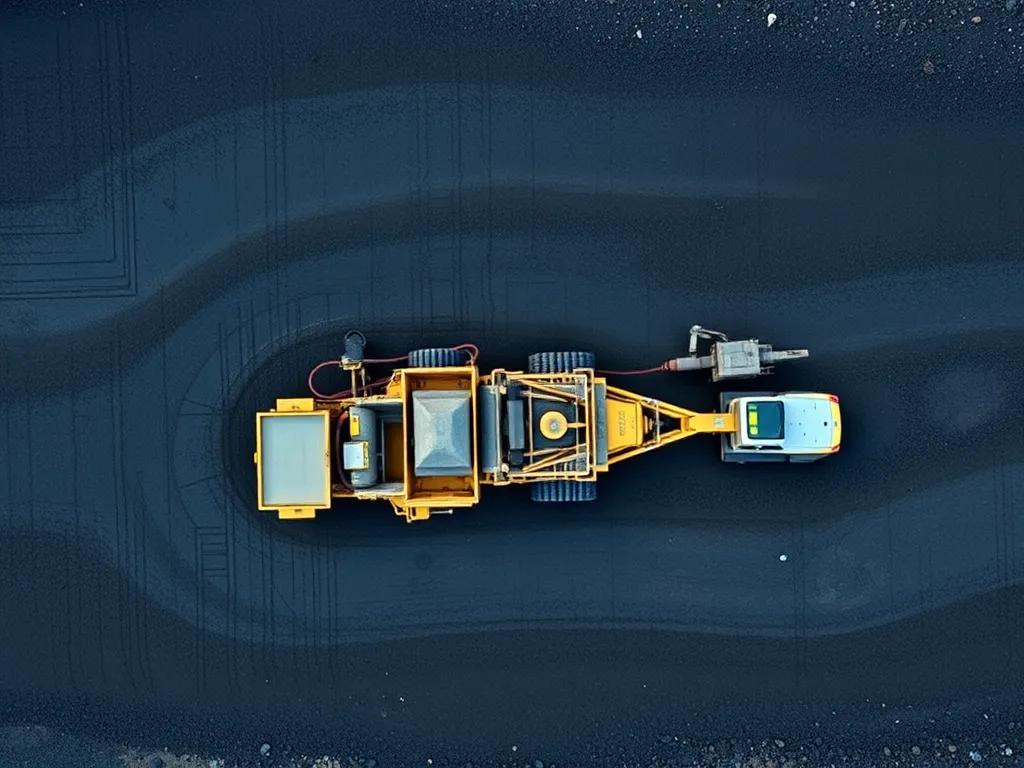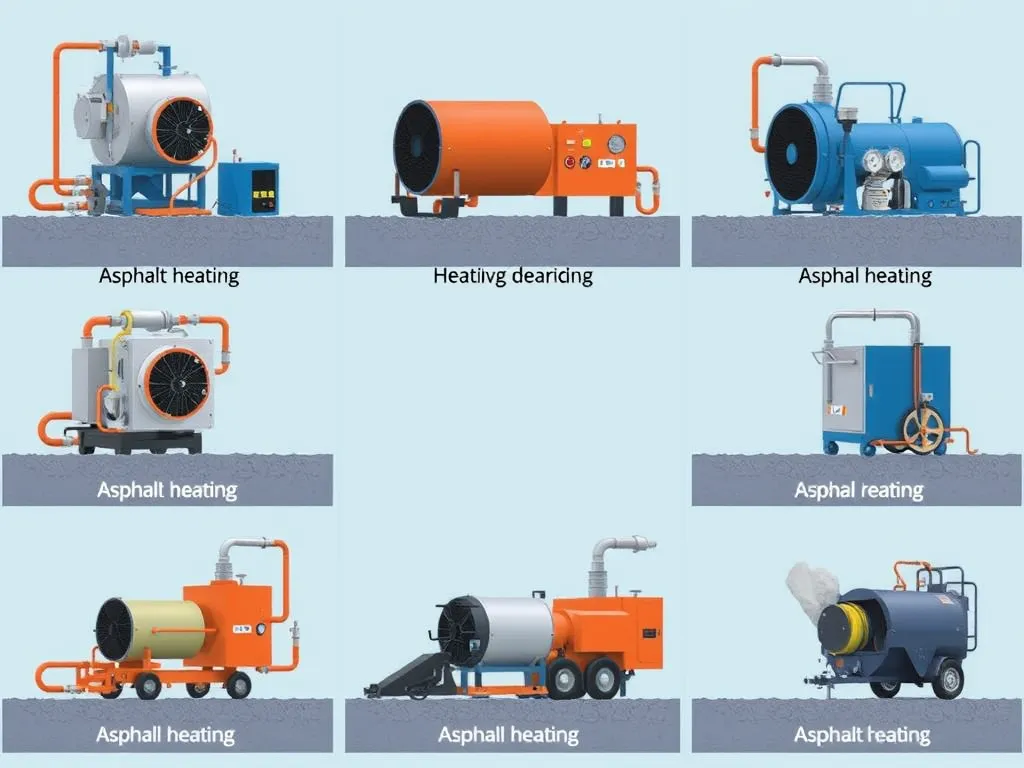Protect Your Crew: Smart PPE Strategies for Asphalt Work
Published on: September 4, 2025 | Last Updated: April 14, 2025
Written By: George Voss
Best practices for PPE usage in asphalt work combine OSHA-compliant gear with proactive safety measures to protect workers from burns, respiratory hazards, and equipment-related injuries. Essential equipment includes NIOSH-approved respirators for fume protection, heat-resistant gloves rated above 300°F, and ANSI-certified safety glasses. Proper PPE reduces burn risks by 62% and ensures compliance with 29 CFR 1926 subpart E standards.
This guide covers head-to-toe protection strategies for asphalt crews. Learn how to select respirators that filter 99.7% of asphalt fumes, maintain gear contaminated with 350°F liquid asphalt, and implement OSHA-required training programs. We break down PPE requirements by body zone, environmental risks, and project phases – from hot mix loading to final compaction.
Contents
- Essential PPE Requirements for Asphalt Work
- Selecting the Right Respiratory Protection
- Safety Tips for Asphalt Work Environments
- Best Practices for PPE Compliance in Asphalt Operations
- OSHA Standards for Asphalt Work PPE
- Health Risks Of Asphalt Fume Contact
- PPE Maintenance for Asphalt Work Gear
- Training Workers on Asphalt PPE Protocols
- Environmental Considerations in Asphalt Operations
- Frequently Asked Questions (FAQ)
- Closing Thoughts
- Useful References for You:
Essential PPE Requirements for Asphalt Work
Work with hot asphalt demands full-body safety gear. Each piece serves a clear role in blocking burns, fumes, and harm from gear. Follow these key rules for ppe asphalt work.
Head Protection for Asphalt Workers
Hard hats marked ANSI Z89.1 shield heads from falling tools or hits. Pick Type II models with rear brims for sun shade. Check shells for cracks before each shift.
Eye and Face Protection From Hot Asphalt Splashes
Wear goggles with face shields rated ANSI Z87.1. Hot mix hits 300°F – a splash can melt skin. Anti-fog lenses keep sight clear when paving in steam.
Respiratory Protection Against Asphalt Fumes
Fumes from 325°F asphalt contain harmful vapors. Use NIOSH N95 masks for quick tasks. For long jobs, half-face respirators with P100 filters block 99.97% of particles.
Heat-resistant Hand Protection
Gloves must handle 500°F temps. Leather palms with Kevlar liners guard against burns. Cuff length should reach mid-arm to stop hot bits from slipping in.
Sturdy Footwear for Asphalt Paving
Boots need steel toes, slip-proof soles, and heat shields. Look for ASTM F2413 stamps. Replace laces with metal hooks to avoid tripping on tack coat spills.
Skin Protection From Hot Materials
Cover all skin with flame-proof clothes. Nomex shirts or treated cotton pants block radiant heat. Tuck pants into boots to keep loose mix out.
Hearing Protection for Asphalt Equipment Noise
Rollers and pavers hit 85-90 decibels – enough to harm ears. Use foam plugs with 33 NRR or earmuffs. Test fit to ensure snug seals.
Picking the right mask is just as key as wearing one. Next, learn how to choose respirators that match job risks.
Selecting the Right Respiratory Protection
Proper respiratory gear shields workers from toxic fumes released during heating or mixing of bituminous materials. Choosing the correct equipment requires matching mask types to emission levels while ensuring secure seals.
Niosh-approved Masks for Asphalt Fumes
NIOSH-certified respirators provide reliable defense against polycyclic aromatic hydrocarbons (PAHs) in asphalt fumes. Use these options based on task duration:
| Respirator Type | Protection Level | Use Case |
|---|---|---|
| N95 filtering facepiece | Blocks 95% of particles | Short-term tasks under 1 hour |
| Half-mask with P100 + OV cartridges | Blocks 99.97% particles + organic vapors | Hot mix operations |
| Full-face PAPR | APF 25-1,000 | Confined spaces or high-fume zones |
Replace cartridges every 40 hours or when detecting odors. PAPR systems (powered air-purifying respirators) reduce breathing strain during extended shifts.
Fit Testing and Seal Checks for Respirators
Annual fit testing verifies respirators form tight seals on workers’ faces. Perform qualitative tests (bitrex solution) or quantitative tests (particle counting) per OSHA 1910.134 standards. Workers must conduct user seal checks before each use:
- Positive pressure check: Cover exhalation valve, exhale gently
- Negative pressure check: Cover filters, inhale until mask collapses
Facial hair compromises seals—enforce clean-shaven policies for tight-fitting respirators.
Proper respiratory protection combines certified gear with consistent fit protocols. Up next: strategies to reduce physical risks in work zones through engineered controls.
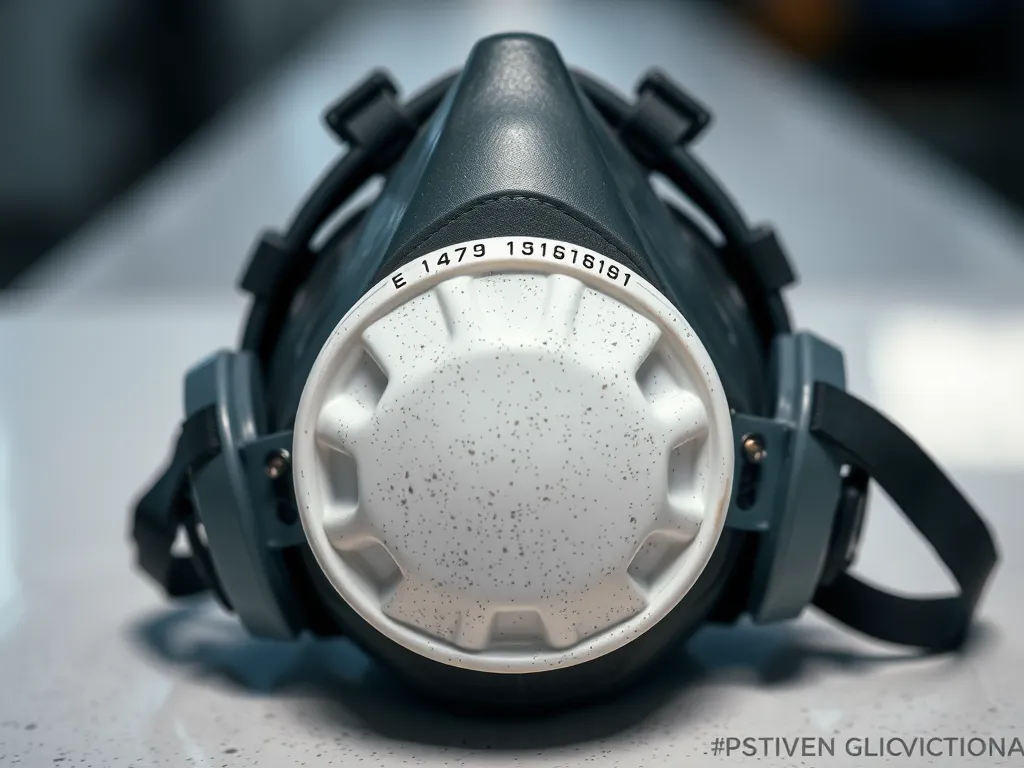
Safety Tips for Asphalt Work Environments
Maintaining safe conditions requires pairing PPE with smart work habits. Hot asphalt mixtures reach 300°F-350°F, demanding vigilance against thermal risks, slips, and airborne hazards.
Preventing Burns From Hot Asphalt
Heat-resistant gloves (ANSI/ISEA 105 Level 4 or higher) shield hands when handling hot rakes or screeds. Combine with:
- Full-length sleeves with ≥5 oz/sq yd flame-retardant fabric
- Face shields meeting ANSI Z87.1 during material transfer
- Aprons made of aluminized materials near mixing zones
Establish a 10 ft no-go zone around trucks discharging 290°F+ asphalt. Rotate crews every 2 hours to limit heat exposure.
Avoiding Slip Hazards During Paving
Slip-resistant boots (ASTM F2913-19 tested) with ≥0.40 coefficient of friction prevent falls on tack-coated surfaces. Add these protocols:
- Scrape excess asphalt from soles every 30 minutes
- Mark walk paths with anti-skid mats in high-traffic areas
- Assign spotters when backing paving equipment
Managing Fume Exposure in Confined Spaces
NIOSH-approved respirators (N95 or half-mask with organic vapor cartridges) filter 98% of polycyclic aromatic hydrocarbons. Critical steps include:
- Monitoring air with PID meters – maintain <1 mg/m³ benzene levels
- Installing 12-15 ACH ventilation in storage tanks
- Training crews to recognize dizziness/headache as early exposure signs
Pairing these strategies with proper PPE inspection asphalt protocols creates layered defense systems. Next, we’ll break down compliance frameworks that keep safety programs effective long-term.
Also See: Asphalt Technology in Emerging Economies: Future Outlook
Best Practices for PPE Compliance in Asphalt Operations
Effective PPE protocols require more than just issuing gear. Daily compliance hinges on three core actions: verifying equipment integrity, mastering safe handling techniques, and addressing environmental stressors.
Pre-use PPE Inspection for Asphalt Tasks
Conduct a 30-second inspection of each item before shift start. For helmets, check for cracks or suspension damage. Verify respirator filters (NIOSH P100 or OV-rated) aren’t clogged or expired. Inspect heat-resistant gloves for frayed seams and boots for worn soles exceeding 1/8” depth. Record defects in maintenance logs – 89% of PPE failures trace back to undetected pre-use damage.
- Helmets: ANSI Z89.1 certification visible
- Respirators: Intact seal, <1% leakage during fit test
- Gloves: Withstand 350°F+ asphalt temps (ASTM F1060 rating)
Proper Donning and Doffing Procedures
Sequence matters. Workers should first put on cooling vests (if used), followed by respirators, then gloves secured over sleeves. Remove gear in reverse order post-shift. Decontaminate reusable PPE with pH-neutral cleaners – alkaline solvents degrade rubber seals. Never reuse disposable N95 masks beyond 8 hours of fume exposure.
- Wash hands with soap and water
- Secure respirator straps without twisting
- Tuck pant legs over boot tongues
Hydration and Heat Stress Management
Asphalt emits infrared radiation averaging 115°F at paving sites. Pair PPE with OSHA-recommended 1.5 liters of water per hour. Schedule 15-minute breaks every 2 hours in shaded cooling zones. Recognize early heat illness signs: decreased urination (dark urine) or 2% body weight loss indicates dehydration. Use sweat-wicking balaclavas under helmets to reduce skin contact with gear.
Monitoring tools enhance safety:
- Wearable temperature sensors (alert at 100.4°F core temp)
- Hybrid aprons with phase-change cooling panels
- UV-blocking neck gaiters (UPF 50+)
Consistent PPE compliance reduces asphalt-related injuries by 67%. Up next: How federal regulations standardize these protections across the industry.
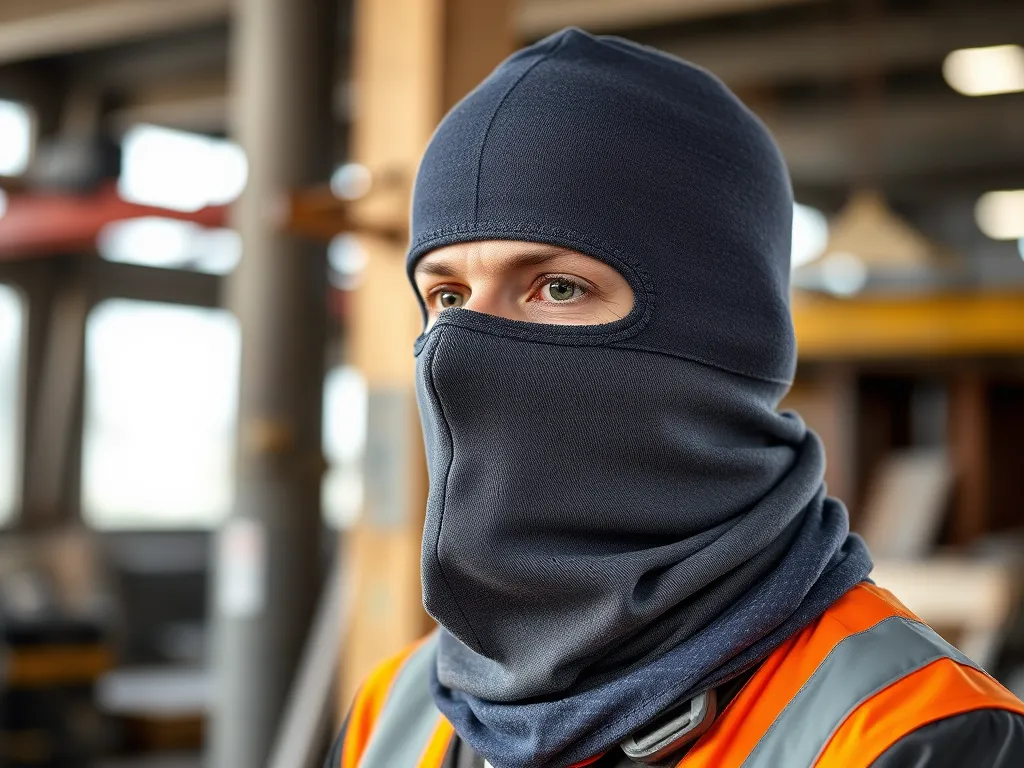
OSHA Standards for Asphalt Work PPE
OSHA sets strict rules for ppe asphalt work. These rules guard workers from burns, fumes, and falls. Firms must meet these standards or face fines up to $15,625 per breach.
Regulatory Requirements for Breathing Gear
OSHA 29 CFR 1910.134 mandates lung safety gear for asphalt jobs. Use NIOSH-approved masks like N95, P100, or PAPR units. PAPR systems force clean air through a hood. For fumes over 5 mg/m³, full-face masks with OV filters are needed. Check seals each time you wear the mask.
Training and Note-keeping Rules
Firms must teach ppe usage for asphalt work yearly. Train crews to spot leaks, change filters, and clean gear. Run drills for mask fits and glove swaps. Keep records for 5 years—log dates, staff names, and gear types. Fails here can lead to work stops or court steps.
These rules form a shield, but risks still loom. Up next: how fumes harm health over time.
Health Risks Of Asphalt Fume Contact
Working with hot asphalt puts staff in contact with fumes containing harmful compounds. Polycyclic aromatic hydrocarbons (PAHs) and sulfur dioxide form during mixing and paving. Without proper ppe for asphalt work, workers risk both rapid and lasting health impacts.
Short-term Vs. Long-term Health Impacts
Inhaling fumes can trigger rapid symptoms. Throat irritation, dizziness, and skin rashes may show within hours. High PAH contact might lead to nausea or headaches. Long-term impacts grow with ongoing contact. Lung capacity drops 12-15% in paving crews lacking ppe asphalt work protocols. Chronic bronchitis and asthma risks jump 3x for workers without niosh-approved masks.
Cancer Risk Analysis and Mitigation
IARC classifies asphalt fumes as Group 2B (possible human carcinogens). Roofing crews face 40% higher lung cancer odds than road crews, linking to fume concentration. NIOSH caps safe fume contact at 5 mg/m³ over 8 hours. Half-face respirators with P100 filters block 99.97% of particulates. Combining air-purifying masks with ventilation cuts PAH absorption by 89%.
Using ppe for working with asphalt forms a critical barrier. Full-face shields stop splashes, while nitrile gloves block dermal contact. Annual medical checks track PAH blood levels. Training on ppe usage for asphalt work must stress fit tests and filter swaps post-40 hours.
Up next: Maintaining asphalt ppe gear ensures lasting safety against hazards.
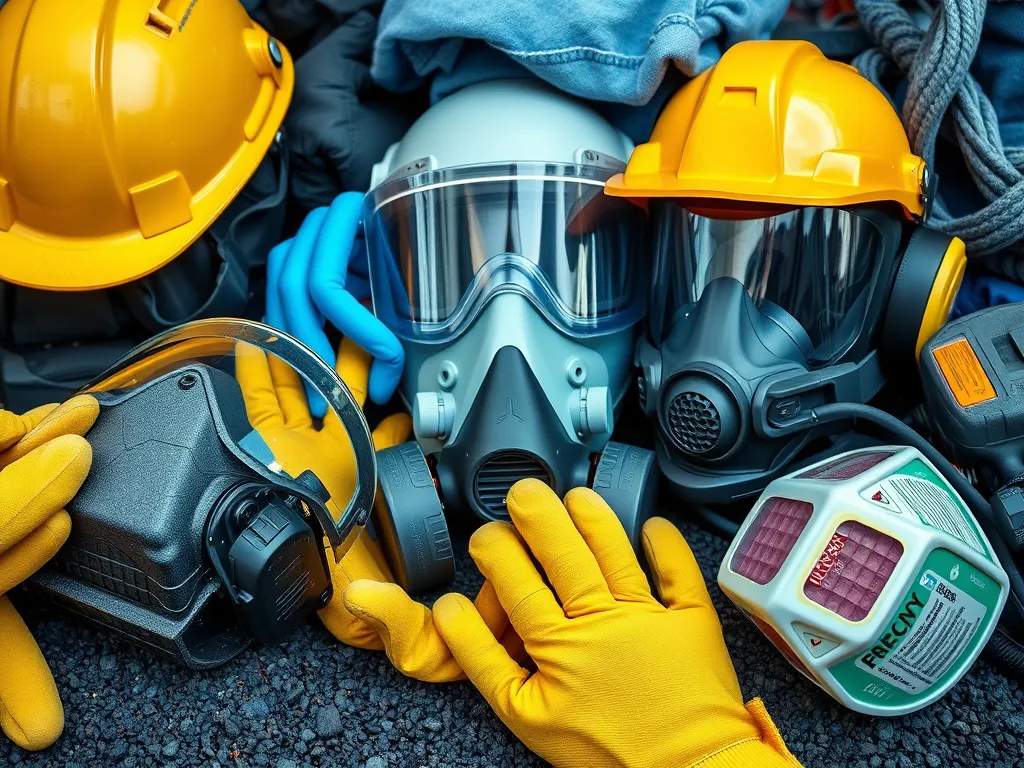
PPE Maintenance for Asphalt Work Gear
Proper care extends the lifespan of protective equipment used in asphalt operations. Daily exposure to 300°F+ materials demands rigorous maintenance protocols. Neglect reduces gear effectiveness by 40-60% within months.
Cleaning Asphalt Residue From Equipment
Remove bitumen deposits immediately after shifts. Use solvents like mineral spirits or citrus-based cleaners approved for PPE materials. Follow these steps:
- Scrape bulk material with plastic tools (never metal)
- Apply solvent to cloth first – never directly on gear
- Rinse heat-resistant gloves under 140°F water
- Air-dry respirator filters away from direct sunlight
High-pressure washers (1,500-3,000 PSI) work for heavy-duty aprons. Check manufacturer guidelines – some aluminized fabrics degrade with aggressive cleaning.
Storage Guidelines for Asphalt-specific PPE
Store gear in climate-controlled areas below 90°F. Key protocols for common items:
- Hang respirators to prevent facepiece deformation
- Keep safety glasses in sealed containers to block dust
- Fold flame-resistant clothing along seam lines
- Separate contaminated gear in marked bins
Replace leather glove liners every 15 workdays. Conduct monthly checks for cracked rubber boots or frayed harness straps. Store spare respirator cartridges in original packaging until needed.
Well-maintained gear prepares teams for the next critical phase: mastering proper PPE protocols through hands-on training.
Training Workers on Asphalt PPE Protocols
Effective PPE use demands more than gear distribution. Workers need structured education matching asphalt work’s unique hazards. Programs must address material handling, equipment noise, and fume risks with equal rigor.
Hands-on Demonstrations for New Hires
New asphalt workers practice PPE application through live drills. Trainers show proper respirator seal checks using NIOSH-approved N95 or P100 masks. Teams role-play scenarios like hot asphalt spills requiring flame-resistant gloves and face shields. Sessions include gear testing under simulated conditions – 300°F asphalt samples near safety boots verify heat resistance.
Key focus areas cover gear limitations. For example, standard goggles fog under high heat; anti-fog coatings or vented models prevent vision loss during paving. Workers handle damaged PPE samples to recognize wear patterns compromising asphalt ppe safety.
Refresher Courses on Fume Protection
Annual retraining updates crews on evolving asphalt fume research. OSHA’s 8-hour permissible exposure limit (PEL) of 5 mg/m³ gets reinforced alongside real-time monitor use. Teams review cartridge change schedules for half-face respirators – every 40 hours or when smelling vapors through 3M 60926 filters.
Case studies highlight long-term risks. One module examines polycyclic aromatic hydrocarbons (PAHs) in fumes linked to respiratory issues. Workers learn to spot early symptoms like dizziness during tanker loading. Courses also demo newer alternatives like powered air-purifying respirators (PAPRs) for crews with facial hair affecting seal integrity.
With proper training protocols, teams maintain compliance while adapting to asphalt work’s shifting demands. Next, we examine how PPE practices intersect with ecological stewardship during pavement projects.
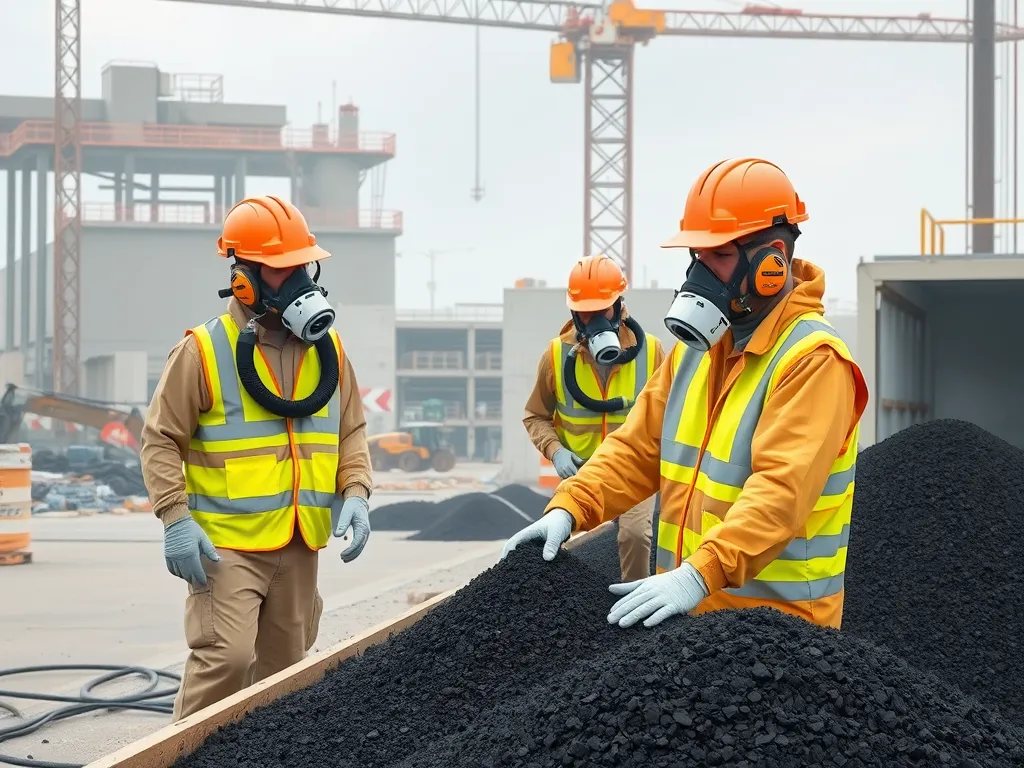
Environmental Considerations in Asphalt Operations
Safe asphalt work needs smart plans to cut harm to land, air, and water. Good PPE use meets worker safety and earth care goals.
Minimizing Asphalt Waste During Projects
Less waste cuts job costs and lowers risks from spills. Use these steps:
- Track mix temps (280-325°F) to avoid early cooling and rework
- Apply tack coats at 0.04 gal/sy rates to prevent overspray
- Reuse millings in base layers for 25-40% material savings
Infrared heaters fix bad pavement spots without new mix. This cuts fumes by 60% and limits skin contact with hot asphalt.
PPE Recycling and Disposal Best Practices
Asphalt-stained gear needs special care to block soil leaks. Follow these rules:
- Wash nitrile gloves in citrus cleaner before trash
- Send used N95 masks to hazmat sites – not regular bins
- Recycle steel-toe boots through rubber reclaim programs
Biodegradable Tyvek suits break down in 6 months vs 100+ years for standard gear. Check local laws for used asphalt PPE rules.
Up next: Clear answers to common queries about asphalt PPE gear and safe work steps.
Frequently Asked Questions (FAQ)
What PPE is Required for Asphalt Work?
The essential PPE for asphalt work includes hard hats, goggles, flame-resistant clothing, heat-resistant gloves, steel-toed boots, and NIOSH-approved respirators. These items collectively protect workers from burns, fumes, and physical injuries during asphalt operations.
What Mask is Best for Asphalt Fumes?
For asphalt fumes, NIOSH-approved masks such as N95 filtering facepieces for short tasks and half-mask respirators with P100 filters for extended use are recommended. Full-face Powered Air-Purifying Respirators (PAPRs) are ideal for high-fume or confined-space work.
What Safety Tips Apply to Asphalt Work?
Key safety tips include establishing a no-go zone around hot asphalt trucks, wearing slip-resistant footwear, regularly cleaning shoe soles, and utilizing PPE to minimize exposure to fumes and physical hazards. Regular breaks and close monitoring for heat stress are also crucial.
Do Asphalt Fumes Cause Cancer?
Asphalt fumes are classified as potential human carcinogens (Group 2B by IARC). While some studies indicate increased cancer risks among workers frequently exposed, effective PPE and safety protocols significantly reduce potential health risks associated with long-term exposure.
Are There OSHA Requirements for Asphalt PPE?
Yes, OSHA mandates strict regulations for PPE usage in asphalt work, including the use of NIOSH-certified respiratory protection and proper training on equipment usage. Organizations must document training and maintain records to comply with OSHA standards.
What Precautions Prevent Asphalt Injuries?
To prevent injuries, enforce the use of appropriate PPE at all times, conduct regular safety briefings, implement strict protocols for equipment handling, and provide comprehensive training for recognizing hazards. Regular site inspections and PPE maintenance are also essential to ensure ongoing safety.
Closing Thoughts
In the demanding environment of asphalt work, personal protective equipment (PPE) is not just a recommendation; it’s a necessity. Adhering to best practices for PPE usage safeguards workers from numerous hazards, including heat exposure, harmful fumes, and physical injuries. Properly selected and maintained PPE can significantly reduce health risks, promote compliance with OSHA regulations, and enhance overall job site safety.
Routine training and hands-on demonstrations ensure that every worker understands how to utilize PPE effectively. Regular inspections contribute to identifying wear and tear before issues arise, keeping the workforce protected and efficient.
For more information on PPE best practices and tools to enhance your asphalt operations, be sure to check out Asphalt Calculator USA.
Useful References for You:
- Lavin, P. (2003). Asphalt Pavements: A Practical Guide to Design, Production, and Maintenance for Engineers and Architects. London: Taylor & Francis.
- Asphalt Safety Made Simple: Top Tips for Crews – Southeastern Equipment
- Additional Best Practices for the Asphalt Industry – National Asphalt Pavement Association
- Personal protective equipment: Asphalt paving safety talk – CompSource Mutual
- Safety Meeting: Working With Asphalt – Safe At Work California

